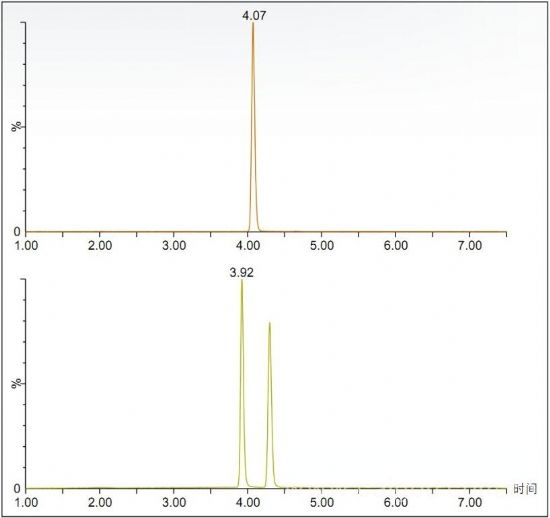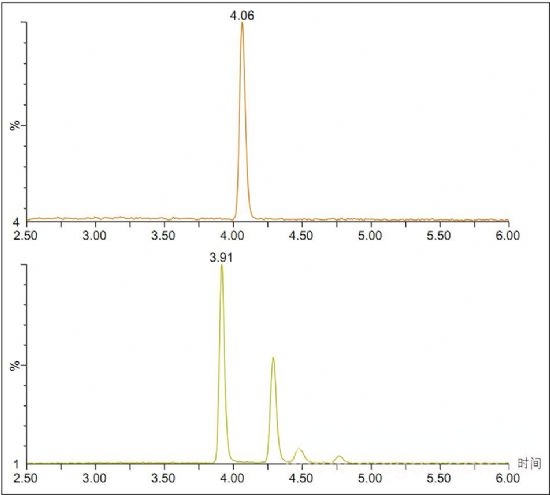Enantiomeric Separation of Active Risperidone Metabolites Using UPC2/MS/MS and Its Application in Metabolic Stability Studies
Jennifer Simeone, Yun Alelyunas, Mark Wrona, and Paul Rainville
Background
Many drug candidates and their metabolites contain one or more chiral centers. The accurate identification and monitoring of enantiomers are essential during the drug development process. Chiral compounds can exhibit different pharmacological activities, toxicities, and metabolic behaviors depending on their configuration. Supercritical Fluid Chromatography (SFC) has emerged as a powerful technique for chiral separations due to its high efficiency, fast analysis time, and compatibility with mass spectrometry (MS). These advantages make SFC an ideal choice for analyzing complex biological samples, especially when working with chiral metabolites.
Solution
This technical note demonstrates the use of UPC2®/MS/MS for the enantiomeric separation and detection of 9-hydroxyrisperidone, the active metabolite of risperidone. Researchers optimized the method using a 9-hydroxyrisperidone standard and then applied it to samples incubated in human liver microsomes. The goal was to monitor the conversion of the parent compound into its hydroxylated metabolites over time.
The method was used to analyze samples quenched at various time points: 0, 15, 30, 60, 90, and 120 minutes. Figure 2 shows an example injection where two expected peaks corresponding to the 9-hydroxy metabolite appear at 3.92 and 4.29 minutes. Two additional peaks were observed at 4.48 and 4.76 minutes, which may correspond to other reported metabolites such as 7-hydroxyrisperidone.

Figure 1. Risperidone (top) and R/S 9-hydroxyrisperidone (bottom).
Figure 1 illustrates the chromatographic separation of achiral risperidone and 9-hydroxyrisperidone using Waters® Trefoil CEL2 3×150 mm, 2.5 μm columns with ammonium formate-modified methanol as a cosolvent. The optimized chromatograms for both R and S configurations are shown.

Figure 2. Analysis of risperidone (top) and hydroxyrisperidone (bottom) incubated with human liver microsomes at t = 120 min.
Peak areas of the parent compound, risperidone, and four hydroxy metabolites were plotted against time. As seen in Figure 3, most of the parent compound was converted to metabolites within 30 minutes. Although the exact R/S configuration could not be definitively confirmed, published data suggest that the formation of R-9-hydroxyrisperidone is more likely. Based on this, we speculate that the earlier eluting peak corresponds to the R configuration, while the later peak represents the S configuration.

Figure 3. Peak area-time profiles of risperidone and its hydroxy metabolites after quenching at 15, 30, 60, 90, and 120 minutes.
Conclusion
The combination of UPC2 and MS provides a reliable and efficient approach for the enantiomeric separation of 9-hydroxyrisperidone, the active metabolite of risperidone. This method highlights the importance of distinguishing between different chiral forms of a compound during drug development. Additionally, the successful application of converging chromatography in metabolic stability studies demonstrates its value in pharmaceutical research.
References
1. G Mannens, ML Huang, W Meuldermans, J Hendirckx, R Woestenborghs, J Heykants. Absorption, metabolism, and excretion of risperidone in humans. Drug Metab Dispos 21: 1134-1141, 1993.
2. N Yasui-Furukori, M Hidestrand, E Spina, G Facciola, MG Scordo, G Tybring. Different Enantioselective 9-Hydroxylation of Risperidone by the Two Human CYP2D6 and CYP3A4 Enzymes. Drug Metab Dispos 29: 1263-1268, 2001.
Download the complete technical brief by clicking here: "Using UPC2/MS/MS for the Separation of Active Metabolites of Risperidone and Its Application in Metabolic Stability Monitoring.pdf"
Luxury Hotel Furniture,Wooden Hotel Furniture,Hotel Style Bed Frame,Wooden 5 Star Hotel Furniture
PinSheng hotel furniture , https://www.pinshotelfurniture.com